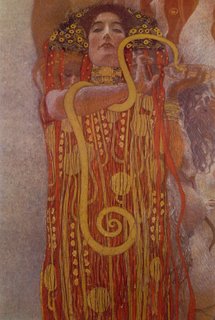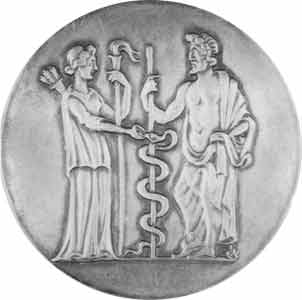Heal Thyself

‘Ye will surely say unto me this proverb, Physician, heal thyself: whatsoever we have heard done in Capernaum, do also here in thy country.”
Luke 4:23
‘The Gods have become our diseases’
Carl Jung
The Oxford English dictionary interprets the above quote from Jesus to mean “before attempting to correct others, make sure that you aren’t guilty of the same faults yourself”. Further definitions of the term ‘physician’ note ‘a qualified medical practitioner’, and ‘a general practitioner, not a surgeon’ and ‘one exerting a remedial or salutary influence’. Etymology of ‘Physician’ suggests derivation from the Middle English fisicien and the Old French fisique, meaning ‘medicine’. Perhaps it pays for us to remember also that ‘physis’ is the Greek word for ‘growth in nature’, of both flora and fauna. In this sense it bears a relationship to the eastern concepts of ‘dharma’ and of ‘tao’ – a kind of ‘way’ of being, seeing and acting in the world.
In this piece I plan to explore a little around the Greek inheritance, following Hillman’s assertion that, mentally, we ‘moderns’ are all products of Greek thought filtered through a Judeao-Christian overlay (and, he might have added, an economic system of corporate capitalism and ‘free market’ ideology that perpetuates the hierarchy of Reason). It is interesting to note that away from the Western mind, in, for example Auyurveda, we find the god form Dhanvantari, physician to the Hindu pantheon and bringer of Amrita and in other forms we find the Medicine Buddhas, Kwan Yin, and very many female forms from Lakshmi to Mary. The Greek model, however, has come to be dominated in form by the long shadows of Apollo, his half-mortal son Asklepios (Aesculepius) and his ‘descendant’ Hippocrates. Their archetypal influence over the modern forms of medicine, the ‘health industry’ and ‘Big Pharma’ is difficult to ignore – even down to the branding imagery of the Hippocratic Oath (which invokes various other goddess forms and involves a promise to do no harm – a hot issue for doctors involved in debates ranging from that of abortion and assisted suicide to participation in state executions and torture) and the snake entwined staff (interestingly, it is often the Caduceus that is depicted, featuring the double snakes associated with Hermes, rather than the Asklepian staff, which is a simple rough stick with a single snake curled up it – some relate this to a printer’s error in Renaissance Europe, others to a more sinister conspiracy to direct will by force, linking magic to sickness and vulnerability/dependency. In fact we have two distinct staffs here - the Caduceus of Mercury (Roman) and the Karykeion of Hermes (Greek)).

So, let us start with Asklepios, son of Apollo (Dr Reason himself) and Koronis (apparently a Boetian princess) and associated with Paion, physician to the gods. Asklepios who is praised by Homer and noted in several other Greek sources, and inspired his own healing cult, was gifted with phenomenal healing powers, it is said. Brought up by the wisdom teacher and Centaur, Chiron (also deeply associated with healing) in the ‘school for heroes’ that included Jason, Odysseus, Achilles and Herakles, Asklepios got off to a good start in life (though abandoned by his father, who was presumably too busy on godly business to be involved in his son’s upbringing). Sometime later, as an ancient intern or houseman, Asklepios was engaged by King Minos to treat his sickly son. However, unable to affect a cure, Asklepios was soon imprisoned with the dying boy (which says something about the relationship between the state (king) and the perceived function of medicine). Presently, a snake entered the locked up room underneath the door. Asklepios immediately killed it (I’m thinking Patriarchal conditioning here, to that abused symbol, the serpent – Adam and Eve anyone? Kundalini yoga?), whereupon another snake entered bearing a leaf. It carefully placed the leaf on the first snake, and that was immediately restored to life. Realising the potential of this leaf, Asklepios used it to cure the sickly Minos Jr, and was hailed as a hero of medicine (though he later paid for these life-restoring powers with his own life, having offended Zeus with his miracle-power in raising Hippolytus from the dead – the revenge of the Sky Father?)
What goes missing in Asklepios’s story though is the feminine, in the form of his wife Epione – another renowned healer – and his many children (Hygeia, Alecis, Aegle, Iaso, Janiscus, Machaon, Panacea and Podaleiros). Type ‘Epione’ into Google and the first result you’ll get is for a Beverley Hills cosmetic surgery business offering laser-tailored breasts and great value liposuction. Does this tell us something?
Why is it that in the Western canon (which is arguably the ‘global’ canon and style of (un)thinking) the healing archetypes of the feminine have been obscured by the image of the heroic male physician? Look at just three of Asklepios’s daughters – Iaso (‘to heal or recover’), Hygiea (from whom we get ‘hygiene’) and Panacea (‘cure-all’) – where they’re noted at all they’re presented as latter-day Mediterranean nurses attending to details within dad’s healing genius, but is this fair depiction? Could it be that their forms pre-date the hero-cult and key back into the matrilinear/matrifocal age of goddess worship and consciousness pre-dating the so-called Bronze Age? Could it be that, as Jung suggested, these ‘gods’ have become our diseases – the excluded feminine at the heart of our individual and collective sickness? Look closer at Hygiea – see that snake around her wrist – isn’t that the same snake that Asklepios has around his staff? And the medicine cup she bears, full of potent herbal distillations gifted by nature, is that not also a symbol cultivated and maintained as a lineage of healing wisdom by women? Look how these ‘daughters’ are subsumed into the later Hippocratic Oath (Hippocrates was said to be a descendant of Podaleiros, Asklepios’s son, as well as of Herakles – making him the perfect Male Medical Hero) – invoked but controlled, used for their gifts but hidden, like a state secret.
Medicine, which was once the most natural of all arts, has today been usurped by the predominant forms of techne, into a billion-dollar global industry aimed at creating wealth and prestige for the few and the illusion of health for the many. The body may live longer (debatable) but under what indignities and slights, and at what cost to life itself? As modernity makes war on death, whilst making mass human (and animal) sacrifices at the altar of war and disease, the luxury of irony hurts the very body of the earth herself and she slowly sickens and pines.
Will the heroes be ready for their biggest case yet, or will they continue to misdiagnose the situation and give a prognosis based on endless growth and ‘success’? Will the institutionalised hubris of med school and the Apollonic bias of millennia continue to blind us with science (and entertainment – since alongside cop dramas, medical intrigue is the number one draw for consensus reality)? And what does this mean for those of us working in the healing field, with our hearts as well as our heads, our words as well as our hands, tool-less in our being – are we in the travelling medicine show hawking yet more snake oil and cosmetics? Or are we potentially a bridge between the Chirotic and the re-emergent feminine? Is our business hamstrung and implicated, part of the reductionist machinery of materialism, or part of a movement towards authenticity, healing rather than curing, choreographing a few more steps in the doctoring of soul?
I’ll leave the final word to one of literature’s best known doctors, here observing his patient – the ruined post-Thatcherite ball-breaker and inverse patriarch, Lady Macbeth:
Foul whisperings are abroad: unnatural deeds
Do breed unnatural troubles: infected minds
To their deaf pillows will discharge their secrets:
More needs she the divine than the physician.
God, God forgive us all!
Macbeth, Act 5 Scene 1
KH
IMAGES: Hygieia by Gustav Klimt (1907), Asklepios Medal (1984) derived from a coin from Pergamon (c.200 BC)



0 Comments:
Post a Comment
<< Home